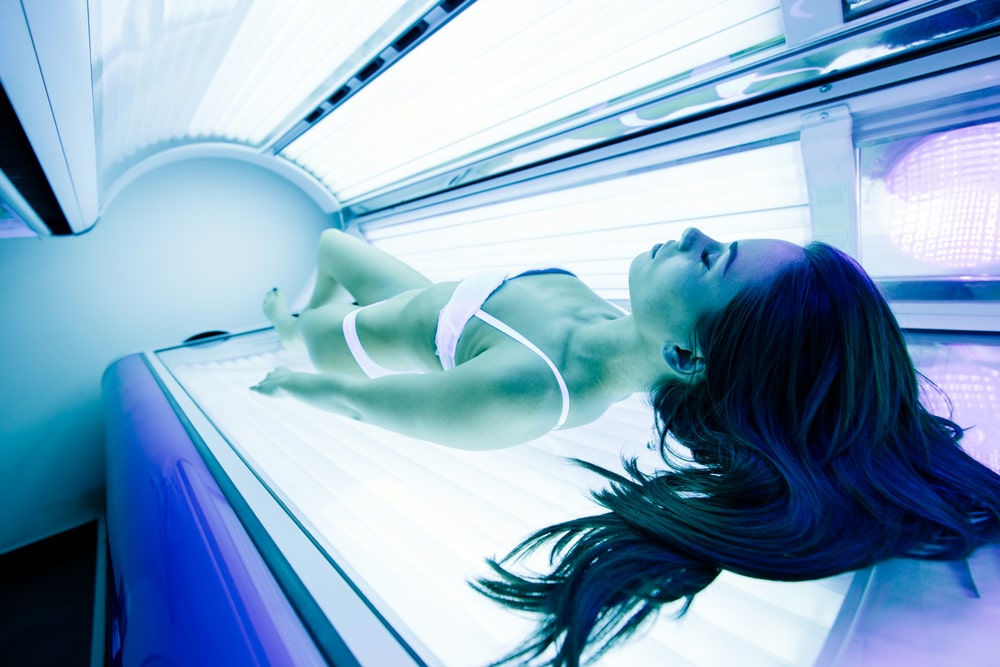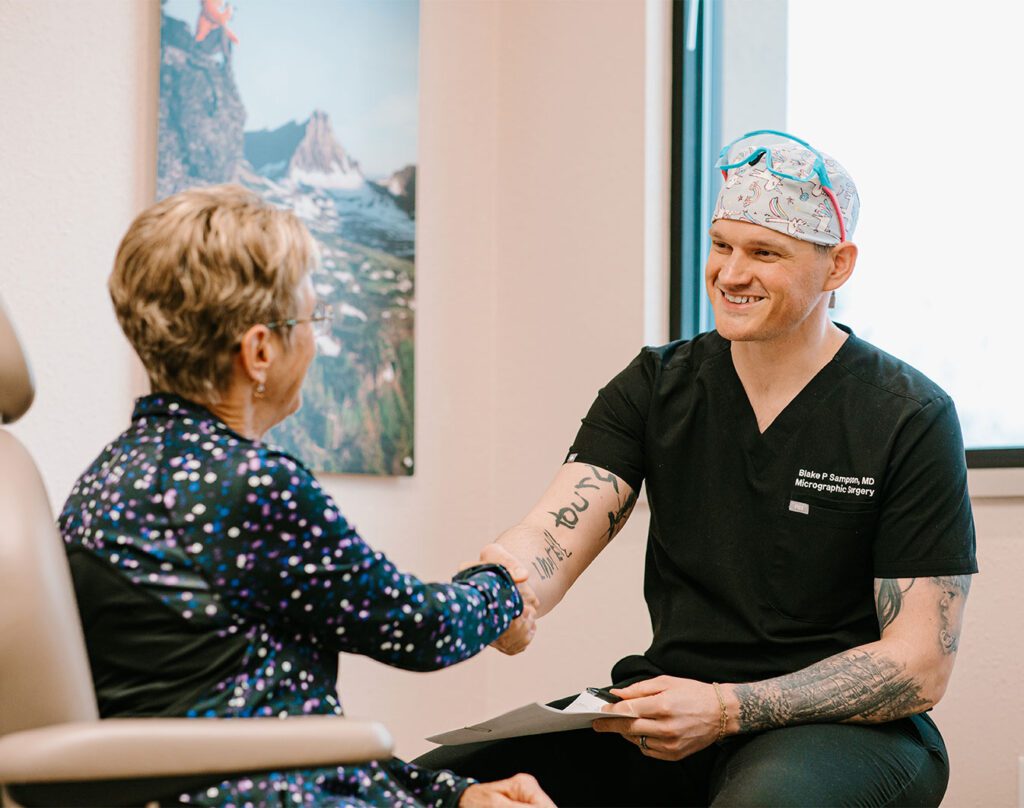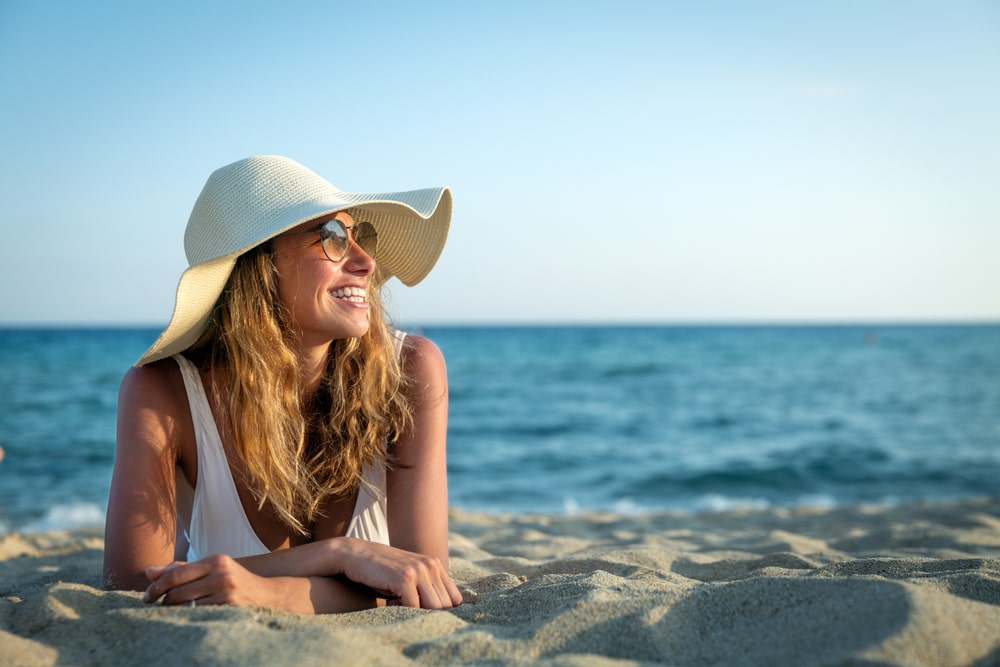There’s nothing like a bright, sunny day to lift your spirits and warm your body. Unfortunately, those UV rays that make us feel so happy (especially here in Northwest Montana) also carry a risk of skin cancer.
Don’t worry, though – you don’t have to forego the outdoors forever.
Instead, follow a few easy tips to stay safe in the sun and reduce your risk of skin cancer. Whether you’re hitting the slopes on a bluebird day or heading out for a tropical vacation, these tips will help protect your skin and avoid signs of premature aging.
6 Smart Tips to Practice Safe Sun
Reduce your risk of skin cancer, sunburn, blisters, and other unpleasant outcomes by following these six easy tips:
1. ALWAYS wear sunscreen

First things first: you should always wear sunscreen. Put it on every time you go outside, even on cloudy days. The American Academy of Dermatology (AAD) recommends reaching for a broad-spectrum, water-resistant sunscreen with an SPF of at least 30 or higher.
Apply about two tablespoons of sunscreen 30 minutes before sun exposure. Spread it evenly across every part of exposed skin on your body, and re-apply at least every two hours or after sweating, swimming, or showering.
To add an extra layer of protection, look for face sunscreens that double as a primer or tinted moisturizers and other products with SPF built-in.
2. Stay in the shade
The sun’s rays are hottest between about 10 am and 2 pm. During those hours, stay in the shade to minimize UV exposure and reduce the risk of skin cancer and sunburn.
Instead of setting up your picnic in the middle of the park, look for a spot under a large tree, or take shelter under a gazebo or awning, where you can still enjoy the beautiful day without putting your skin at risk.
3. Protect your skin with clothing
Clothes are a great line of defense against harsh UV rays. When you head out for a day of fun in the sun, don sun-protective clothing first.
We recommend looking for lightweight, long-sleeved pants and shirts in the summer and adding a wide-brimmed hat and sunglasses with polarization or UV protection. If you’re going fishing, you can also purchase UV-resistant fishing gloves that protect the backs of your hands.
During winter activities like skiing or snowmobiling, look for UV-protective face coverings and eye protection, like goggles or sunglasses, which will shield your face and eyes from harsh UV rays reflecting off the snow’s surface.
Pro tip: Remembering to wear sun-protective clothing can be tricky. To make it an easier part of your daily routine, we recommend investing in high-quality clothing that fits you well and makes you feel good.
Today, many brands make durable, attractive UV-blocking sunglasses and layers that suit various styles. Shop around until you find items you love, and don’t be afraid to invest in them. Knowing you’ll wear them all season long and that they’ll lower your risk of skin cancer is a great reason to buy high-quality items.
4. Avoid tanning to reduce your risk of skin cancer

For years, a deep, sun-baked glow was in vogue. However, we now know that high melanin levels signify sun damage that could lead to skin cancer. With this in mind, avoid tanning in all capacities.
Stay out of UV tanning booths and avoid “lying out” in the sun at the beach. If you can’t live without your bronze glow, look for skin-safe alternatives, like sunless self-tanners or spray tans.
While these used to leave you orange and streaky-looking, formulations have come a long way. Today, sunless self-tanners are available in serums, foams, and lotions, and many have a “buildable” feature that allows you to nail that perfect sun-kissed glow without damaging your skin.
5. Learn how to perform self-exams
While skin cancer is the most common cancer in the US, it’s also one of the most preventable. It’s also highly curable as long as you identify it early. With this in mind, get good at performing skin self-exams.
Here’s a quick how-to:
- Start by examining your face and scalp. Use a mirror or two to check hard-to-see areas, like the backs of your ears and your hairline.
- Next, check your hands, arms, and torso. Lift breasts and skin folds to check the undersides before scanning your upper back in a full-length mirror.
- Finally, scan your lower back, legs, and the soles of your feet.
For a more comprehensive guide on performing a self-check, visit this resource.
6. Visit your dermatologist
Last but not least, see your dermatologist at least once a year for a full-body, professional skin exam.
Your dermatologist will be able to identify skin cancer warning signs, and provide personalized guidance on how to keep your skin safe, healthy, and beautiful for years to come.
If you have a history of skin cancer in your family or you’ve had skin cancer in the past, it’s essential to stay vigilant about these meetings.
Bonus Tip: Know the UV Level in Your Area

Want to take your sun safety to the next level? Download this worldwide UV index widget on your smartphone.
The convenient tool allows you to track the UV levels wherever you are, access worldwide UV forecasts, and make informed decisions about when to stay inside or seek shade and when you can safely venture out into the sun.
Dermatology Associates: Your Trusted, Local Dermatologist

Whether you want to reduce your risk of skin cancer, avoid signs of early aging, or both, practicing safe sun is a critical part of the process.
Fortunately, our team is here to help.
At Dermatology Associates, our team of board-certified dermatologists provides everything from routine skincare services to advanced skin cancer treatments, like Mohs Surgery, screenings, and more.
Serving clients in Kalispell and beyond, we’re proud to be your partner in beautiful, healthy skin.
Contact us today to learn more about our team and services or to schedule your first appointment.





